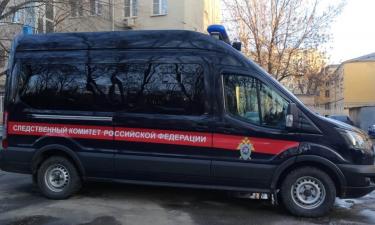Russian kopeck goes down in history yet again
The Russian kopeck coin changed its appearance many times, but steadily lived in purses and pockets of the Russians. After celebrating its 460-year anniversary, it briefly went down in history, but was revived, still depicting George the Conqueror on a horseback. Now it is time to say goodbye. Recently the Central Bank of Russia announced that the kopeck will not be minted any longer.
During the reign of Elena Glinskaya, the mother of Ivan the Terrible, it was common to cut silver coins. As a result, they lost weight, thus causing lack of trust among people. The old money, regardless of their integrity, was banned and replaced. The first kopeck appeared in 1534 and had an image of a horseman with a spear in his hand. Vladimir Dahl in his Explanatory Dictionary of the Russian Language, published in 1881, proposed a theory that the name "kopeck" originated from "kopeet'" ("save") money. The first kopecks looked like watermelon seeds, were irregular in shape, made of silver, each weighing 0.68 grams. The money was carried in belts, and if the amount was small, it was easy to put it behind the cheek.
Also read: The Golden Age of the Russian ruble
The kopeck preserved this weight for nearly a hundred years, and only at the beginning of the Polish-Swedish intervention in 1610 its weight was reduced. In the 17th century its weight was reduced several times and in the beginning of the reign of Peter the Great it reached the weight of 0.4 g. Peter himself called these coins "old lice."
In 1704 Peter the Great implemented a monetary reform. The kopeck was now produced from copper and increased in size. For the first time the kopeck acquired its usual round shape and had a date engraved on it. The old silver wire coins were minted for another 14 years. The image of a rider with a spear on the kopeck lasted until the end of the 18th century.
Some copper and silver coins of Peter's time had interesting marking of value. For literate people the denomination was indicated in words, for illiterate ones - with a number of dots or dashes. This method was used until 1810.
In 1915, the royal government of Nicholas II, trying to cope with the costs of the war, dramatically increased printing of paper money, including kopecks. There were banknotes of 2, 3, 5 and 50 kopecks.
Also read: Can Russian ruble become international reserve currency?
The first Soviet kopeck went into circulation in 1924. Until 1927, half- kopeck coins were minted. Since coinage production required copper necessary for the industry, it was decided to discontinue the copper kopeck. Since 1926, the country has moved to the coinage of gold alloy of bronze (copper-zinc alloy) in denominations of 1, 2, 3, and 5 kopecks. From that moment the weighs of the kopeck was precisely one gram, two kopecks - two grams, three kopecks - three grams, and the Russian ruble had 100 grams of small change. The cost of the kopeck was the most expensive - 8 kopeck to mint one coin. It cost about 16 kopeck to mint the Russian ruble. During the Soviet money reforms small coins remained unchanged. In the reform of 1947 it was not touched, and in the reform of 1961 old bronze coins of 1, 2 and 3 kopecks remained in circulation alongside the new money.
After the collapse of the Soviet Union the inflation gained momentum and "ate" the kopeck. The Central Bank of Russia officially stated that, before its 460th birthday, the kopeck would cease to exist, and would go down in history. However, the coins issued in 1961-1991 (and even coins of 1, 2 and 3 kopeck of earlier editions) remained legal until 31 December 1998.
As a result of the Russian ruble denomination on January 1, 1998, Russia revived the kopeck as its 1/100. New kopecks had different denominations and weight. Like in 1535, they depicted a horseman with a spear. The cost of production of all Russian coins up to 5 rubles exceeds denomination of these coins. For example, the cost of minting a 5-kopeek coin is 69 kopecks, and 1 kopeck - 47. Last year, the Bank of Russia stopped minting small denomination coins of 1 and 5 kopeck.
Under Ivan the Terrible one could buy 3 kg of rye with one kopeck, 7 kopecks would buy an axe, 5-10 - a padlock. A cow and a horse cost one ruble, clothing (compared to grain and tools) was expensive: a simple robe cost the farmer 20-40 kopecks.
Under Peter the Great the average wage of unskilled workers was 5-8 kopecks a day. For comparison, 16 kilograms of meat cost 30 kopecks, 16 kilograms of bread - 10 kopecks. In a day a laborer earned 2.5-4 kg of meat.
Between the times of Ivan the Terrible and the reign of Nicholas II the kopeck dropped in value.
Also read: US dollar vs. Russian ruble
Under Tsar Nicholas II daily earnings of a roofer were 2 rubles and 8 kopeck, a carpenter - 1 ruble 92 kopecks, locksmith and blacksmith at 1 ruble 90 kopecks. At the time of the last Russian Tsar 1 kg of meat cost 30 kopecks, bread - 5 kopecks, 100 g of chocolate - 15 kopecks, Sturgeon - 8 kopecks, a bucket of pickled tomatoes was 8 kopeks, and a cow was worth 8 to 10 rubles.
Even with the start of the First World War in 1915, the prices in the markets were quite acceptable. Beef and lamb could be purchased for 25 kopecks per kilogram. A Christmas goose could be bought for 85 kopecks, chicken - 30, and partridge - only 15 kopecks.
One kopeck in the late Soviet period could buy a piece of bread in a canteen, a pencil, a box of matches, two envelopes without stamps, or a glass of soda. In recent years, a kopeck cannot buy anything.
The largest kopeck was issued in 1726 during the reign of Catherine the First. It was minted at the Yekaterinburg Platov yard, its weight was 16.38 g. It was of square shape and its size was 23 × 23 mm.
The heaviest kopeck was issued in 1755-1757 under Elizabeth. It was minted in St. Petersburg, Yekaterinburg, and Moscow Mints, its weight was 20.48 g.
Tatiana Onaverina.
Subscribe to Pravda.Ru Telegram channel, Facebook, RSS!




